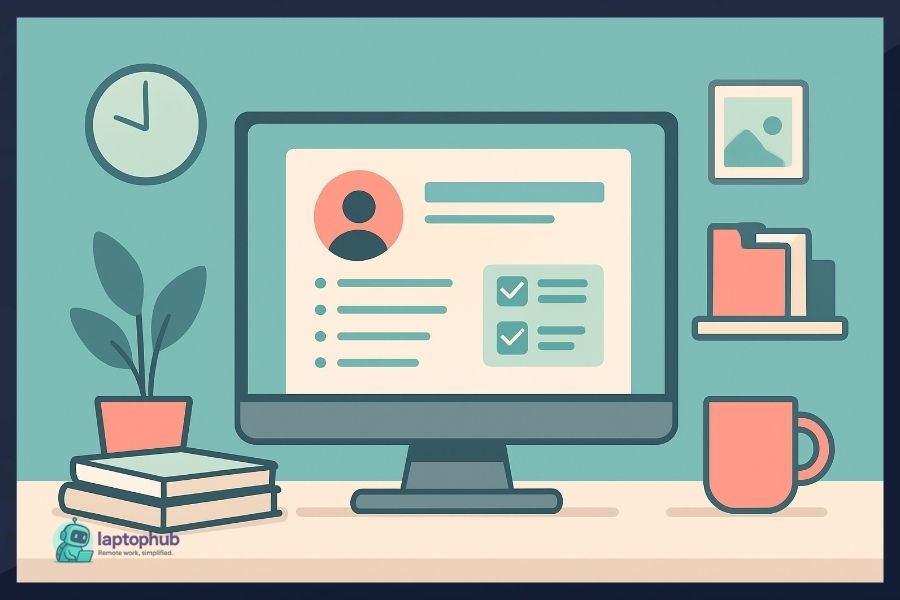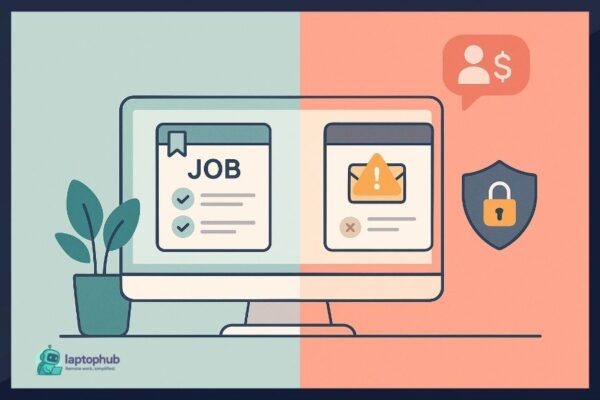Remote jobs aren’t just for digital nomads anymore—they’re now standard across tech, marketing, design, customer service, and more. But if you’re applying for one, knowing how to write a resume for remote roles is crucial. It’s not enough to list your experience and hope for the best. You need to show employers you can work independently, manage your time without supervision, and communicate effectively across digital platforms. A remote-ready resume doesn’t just highlight what you’ve done—it proves how you work when no one’s looking over your shoulder.
💡Key takeaways:
- Demonstrate your ability to work independently and communicate effectively in a remote environment.
- Structure your resume for clarity, ATS compatibility, and remote-readiness.
- Use specific achievements, remote tools, and keywords from job descriptions to showcase your value.
- Highlight relevant experience—including freelance and certifications—that proves your fit for remote roles.
1. Understand What Hiring Managers Look for in Remote Workers
Before you update your resume, understand what makes a strong remote candidate. Employers hiring for remote jobs need people who:
- Are self-starters and manage their own time well
- Communicate clearly in writing and on video
- Collaborate effectively using digital tools
- Deliver results without constant supervision
These aren’t just nice-to-haves. They’re core competencies. If your resume doesn’t show these traits, it won’t matter how good your technical skills are.
2. Choose a Simple, Skimmable Format
Remote roles attract more applicants than traditional jobs, so your resume must be easy to read fast. Use a clean format with:
- Clear headers for each section
- Bullet points instead of paragraphs
- Logical order (most recent job first)
- Plenty of white space
- One modern, easy-to-read font like Arial or Calibri
Avoid fancy design elements or graphics unless you’re in a creative field. ATS software might not parse those properly.
3. Tailor Your Summary for Remote Work
The professional summary at the top of your resume should immediately position you as remote-ready. Use it to introduce your experience, key strengths, and comfort with remote work.
Example (Good):
Digital marketing strategist with 7+ years of experience, including 4 years managing remote teams. Skilled in SEO, content marketing, and project management using Notion, Trello, and Slack. Proven track record of leading multi-channel campaigns across different time zones.
Example (Needs Work):
Passionate marketer looking for a flexible opportunity to grow and contribute.
The first example works because it communicates experience, tools, and a history of working remotely. The second is vague and focuses more on personal gain than value.
4. Label Remote Roles Clearly
For every job you’ve done remotely, add “(Remote)” next to the job title or location:
Senior Content Writer (Remote)
Acme Agency | March 2020 – Present
This small change instantly tells recruiters you’re not new to remote work. You can also note if a job transitioned from in-office to remote:
Began role in-office and successfully transitioned to a remote setup in 2020, maintaining team productivity and hitting all KPIs.
5. Show Your Results and Your Workflow
Recruiters want more than a list of tasks. They want to know what you achieved and how you did it while working remotely.
Example:
- Increased blog traffic by 60% over 9 months by implementing a new content strategy. Managed a team of three freelance writers via Trello and weekly Zoom check-ins.
This bullet combines achievement (traffic growth) with process (remote tools and communication).
6. Spotlight Remote-Friendly Skills
Add a “Skills” section that shows you’re equipped for independent, online collaboration. Include both technical and soft skills. Examples:
Remote Tools: Zoom, Slack, Google Workspace, Notion, Asana, ClickUp, Microsoft Teams
Soft Skills: Time management, asynchronous communication, accountability, digital organization, problem-solving
Customize this section for each application. Match your skill terms with the language in the job posting.
7. Optimize for Applicant Tracking Systems (ATS)
Most companies use ATS to screen resumes. That means your resume needs to include keywords from the job description. For example, if the listing mentions:
- “Remote collaboration”
- “Agile project management”
- “SEO content strategy”
Make sure your resume uses the same terms naturally. Don’t copy-paste entire sentences, but do echo key phrases. This increases your chance of getting through the initial filter.
8. Add Context to Your Achievements
Don’t just list what you did. Explain the outcome and, if possible, how your remote setup played a role.
Instead of:
- Managed client onboarding.
Use:
- Managed onboarding for 25+ clients remotely, reducing churn by 20% through proactive Zoom check-ins and clear documentation via Notion.
This version gives numbers, tools, and impact. That’s what hiring managers remember.
9. Create a “Remote Work Experience” Section (Optional)
If your remote experience spans multiple jobs or freelance roles, it can help to collect it in its own section:
Remote Work Highlights
- 6+ years managing distributed teams in SaaS and e-commerce sectors
- Experienced in async communication using Loom, Slack, and email
- Led cross-functional projects with teams in the US, UK, and Southeast Asia
This section works especially well if you’ve held multiple short-term remote roles or if your job titles don’t make the remote aspect obvious.
10. Don’t Hide Freelance Work
Many people think freelance work isn’t “real” experience. It is—especially in remote roles. It shows you can self-manage, meet deadlines, and deliver client value.
Structure freelance entries just like jobs:
Freelance UX Designer (Remote) Various Clients | 2019 – Present
- Designed user flows and interfaces for fintech startups
- Communicated progress with clients via Slack and weekly Zoom calls
- Delivered all projects on time with 95% client satisfaction rate
Even short gigs can showcase your remote skills. Include the tools and processes you used, not just the work delivered.
11. Mention Certifications That Support Remote Readiness
If you’ve taken courses that help you perform better remotely, include them. Examples:
- Remote Work Foundations (LinkedIn Learning)
- Productivity & Time Management for Remote Teams
- Google Project Management Certificate
Certifications show you’re proactive about developing the skills needed to succeed in a distributed environment.
12. Add Links to Relevant Work
Remote jobs often involve digital communication and content, so linking to samples helps. Include:
- Portfolio website
- LinkedIn profile
- GitHub repo (for developers)
- Writing samples
Use hyperlinks in your PDF or paste full URLs if you’re submitting a plain-text version.
13. Write a Strong, Personalized Cover Letter
Yes, cover letters still matter—especially for remote roles where culture fit is crucial. Use your letter to:
- Explain why you want to work remotely
- Share how you stay focused and organized
- Reference specific details about the company or job
Keep it to a few short paragraphs. Make it personal but professional. Avoid repeating your resume word-for-word.
Example opening:
I’m excited about the opportunity to join [Company Name] as a remote content strategist. I’ve followed your blog for months and appreciate your clear, accessible writing on complex topics. With over five years of remote experience and a passion for SEO, I believe I can contribute to your growing audience.
14. Avoid Overused Buzzwords
Phrases like “results-driven” or “team player” are generic and overused. Replace them with more specific language:
- “Delivered a 45% increase in conversions” > better than “results-driven”
- “Collaborated daily via Slack with developers and designers” > better than “team player”
Be clear, direct, and specific. Show, don’t just tell.
15. Final Resume Checklist
Before hitting send, go through this quick list:
- ✅ Is your summary remote-focused?
- ✅ Have you labeled remote roles clearly?
- ✅ Are your achievements backed by numbers?
- ✅ Did you naturally use keywords from the job description?
- ✅ Is the format clean and ATS-friendly?
- ✅ Are there zero spelling or grammar mistakes?
- ✅ Are key tools and platforms listed?
- ✅ Is your resume saved as a PDF?
- ✅ Did you personalize your cover letter?
These simple steps can make the difference between landing an interview or getting ignored.
Remote Resume Example Outline
Here’s a recap of how to structure your resume:
[Full Name]
[Phone Number] | [Email Address] | [LinkedIn] | [Portfolio URL]
Professional Summary
- Brief and focused on remote skills and experience
Skills
- Remote tools, technical skills, and soft skills
Work Experience
Job Title (Remote)
Company Name | Dates of Employment
- Specific, results-based achievements
- Mention of remote workflows or tools
Freelance/Contract Work (if applicable)
Job Title (Remote)
Client Name or Various Clients | Dates
- Short bullet points that demonstrate impact
Education
- Degree | Institution | Graduation Year
Certifications (Optional)
- Relevant remote or job-specific certificates
Remote Work Highlights (Optional)
- Bullet points summarizing years of remote experience, tools used, global collaboration
Frequently asked questions (FAQs)
No, but you should highlight experiences that show you can work independently, manage deadlines, and communicate clearly online.
Use a clean, ATS-friendly layout with bullet points, clear headers, and an emphasis on remote tools and accomplishments.
Absolutely—freelancing demonstrates independence, communication, and time management, all critical for remote work.
List tools like Zoom, Slack, Google Workspace, Asana, Trello, or any platform the job description mentions.
Very. A thoughtful, personalized cover letter shows initiative and can be the edge that gets your application noticed.
Final thoughts
Remote employers aren’t just hiring for skills—they’re hiring for trust. They need to believe you can perform, communicate, and lead without being micromanaged. The right resume doesn’t just check boxes; it gives a glimpse into how you operate when no one’s watching. Nail that, and you won’t just get callbacks—you’ll get offers that align with how and where you want to work.





